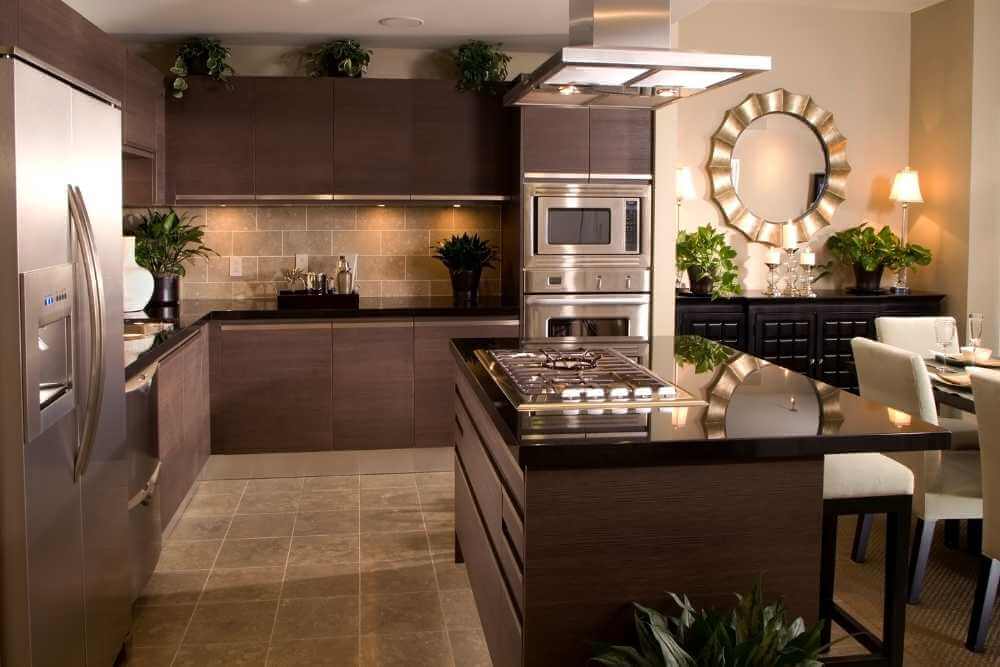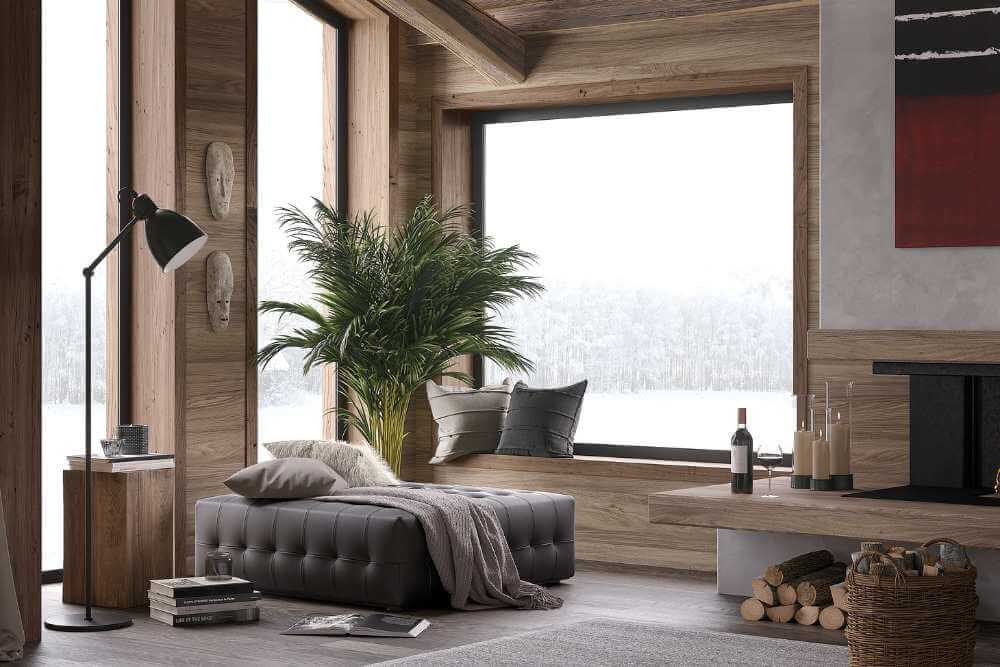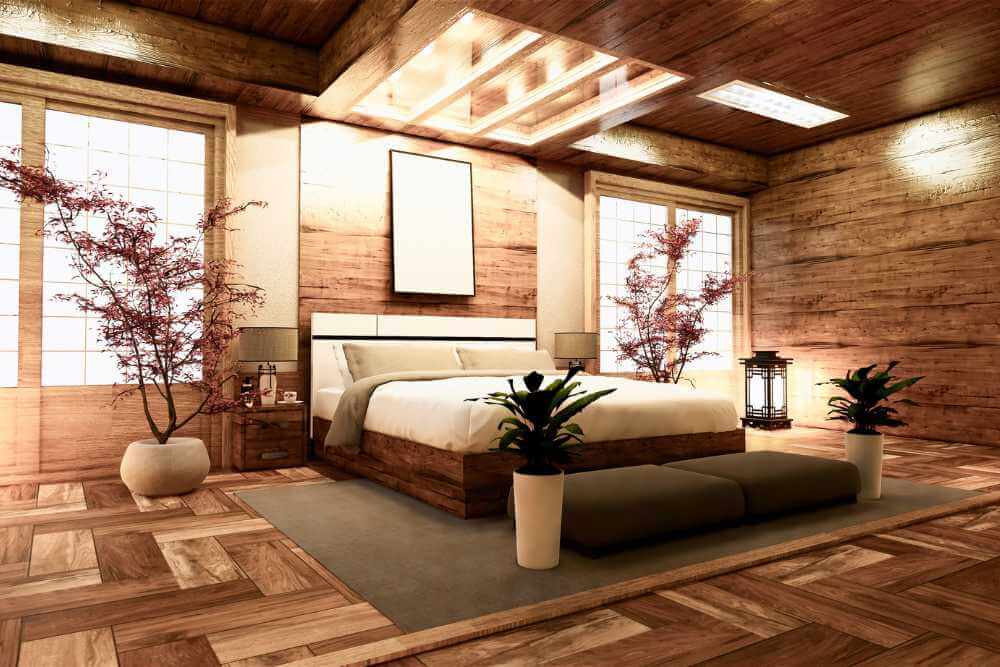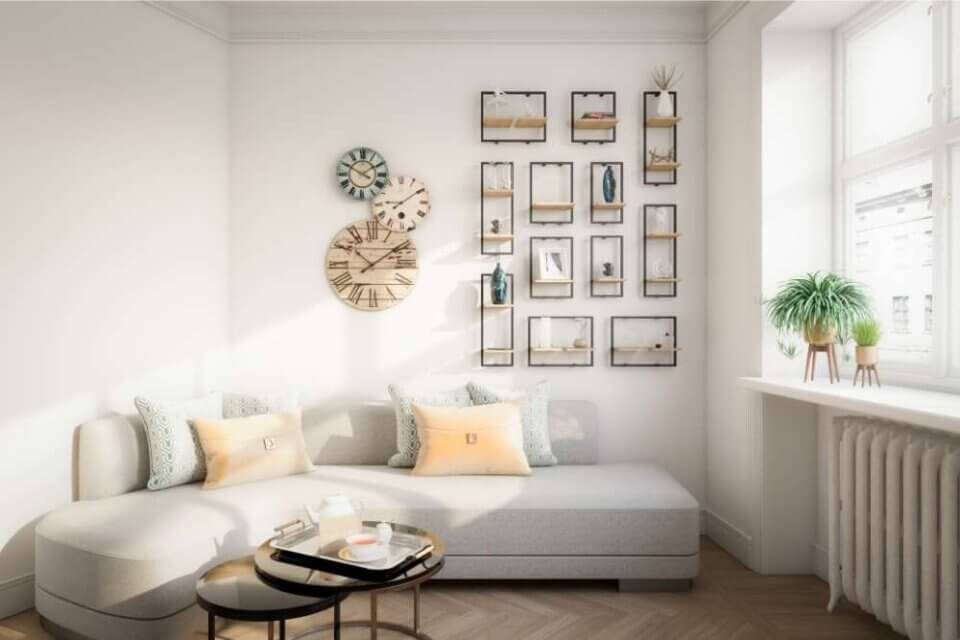Have you ever stepped into a home and felt instantly calm, even if it wasn’t particularly large? That feeling doesn’t come from square footage. It comes from visual flow. the way your eye naturally moves through a space.
When a home’s design creates seamless visual direction, rooms feel larger, more balanced, and more welcoming. The best part? You don’t need to knock down walls or splurge on a luxury renovation. By using a few smart design principles, you can transform even a modest apartment into a space that looks and feels expansive.
Here’s how to do it.

1. Use Line Continuity to “Pull” the Eye Forward
Lines are one of the most powerful tools in design. They work almost subconsciously, leading your gaze and shaping how you perceive space.
- Horizontal lines (like a low, streamlined TV console) create a sense of width and stability.
- Vertical lines (such as tall bookcases or floor-to-ceiling curtains) make ceilings appear higher.
- Diagonal lines (for example, a patterned rug angled toward a focal point) add movement and draw attention.
How to Apply This in Your Home:
- Living room: Choose a sofa and coffee table with similar lengths to visually “stretch” the room.
- Kitchen: Use long cabinet handles or a continuous backsplash line to direct the eye smoothly across the space.
- Entryway: A runner rug or wall-mounted hooks in a linear arrangement creates a natural pathway inward.
Pro Tip: Keep your furniture in alignment. For instance, pairing a long dining table with a low credenza behind it maintains horizontal flow, while mismatched heights can break it and make the space feel smaller.
2. Master the Art of Negative Space
Many homeowners fill every corner with furniture or décor, thinking it will make a home feel cozy. In reality, negative space—the “empty” areas between objects—is what allows rooms to breathe.
When negative space is used well:
- Your eye rests more easily, reducing visual clutter.
- Each item in the room feels more intentional and elevated.
- Rooms feel bigger because they aren’t crammed with competing focal points.
How to Apply This in Your Home:
- Bedroom: Leave at least 24–36 inches around the bed for clear walking paths.
- Living room: Float the sofa a few inches away from the wall to create depth and better proportions.
- Dining area: Instead of bulky china cabinets, consider open shelving or a slim sideboard that doesn’t overwhelm.
💡 Pro Tip: When in doubt, edit. If you have five decorative pieces on a console table, remove two. Often, what you leave out matters just as much as what you add.

3. Anchor Each Room With a Visual Focal Point
A room without a focal point feels disorganized because your eyes don’t know where to land. By establishing one dominant anchor, you instantly create balance and flow.
- Living room: A statement media wall with built-ins or a dramatic piece of art can center the space.
- Bedroom: A tufted headboard or bold wallpapered accent wall creates immediate structure.
- Kitchen: A striking island pendant light or patterned backsplash can define the room’s personality.
Once you’ve identified the focal point, arrange surrounding furniture and accessories to complement it. For example, angle armchairs slightly toward a fireplace or hang lighting to emphasize the center of a dining table.
💡 Pro Tip: Avoid competing focal points. If your living room has both a TV and a gallery wall, choose one to dominate while the other supports it visually.
4. Layer Depth With Overlapping Sightlines
Small homes often feel “flat” because everything is visible at once. Layering depth creates dimension, giving the illusion of a larger, more dynamic space.
Practical Ways to Add Depth:
- Mirrors: Position mirrors opposite windows or hallways to extend sightlines.
- Open shelving: Replace solid upper kitchen cabinets with open shelves or glass fronts to add layers without heaviness.
- Partitions: Use slatted screens or glass dividers instead of solid walls to separate areas while maintaining flow.
For example, in a compact apartment, placing a console table behind a sofa with a lamp and small décor creates foreground, mid-ground, and background layers—a subtle but powerful trick used in professional staging.
💡 Pro Tip: Think of your space like a photograph. Foreground pieces (like a coffee table), mid-ground items (like a sofa), and background elements (like a feature wall) give visual depth.

5. Guide Movement With Lighting Placement
Lighting doesn’t just brighten a room—it directs attention and controls flow.
- Ambient lighting sets the overall mood.
- Task lighting (like under-cabinet strips or reading lamps) focuses the eye where work happens.
- Accent lighting highlights architectural details or décor.
Room-by-Room Lighting Ideas:
- Living room: Use wall washers to visually “push” boundaries outward, making the space feel wider.
- Bedroom: Place bedside lamps lower to ground the space and create intimacy.
- Hallways: Install track lighting to subtly guide the eye forward and draw attention toward connecting rooms.
💡 Pro Tip: Dimmers are your secret weapon. Adjusting brightness levels throughout the day subtly shifts the mood and movement of a space, creating visual flow that evolves naturally.
Bonus: Plan for Flow Early—Not After
If you’re about to renovate or buy new furniture, it’s far easier (and cheaper) to plan visual flow from the start than to fix it later. For example:
- Positioning an entryway in line with a window creates a natural “sightline” that makes the space feel deeper.
- Opting for sliding glass doors instead of swinging ones preserves uninterrupted walls and visual pathways.
- Choosing built-in storage rather than bulky wardrobes prevents clutter from breaking the flow.
Before committing to major changes, it’s smart to understand your renovation budget clearly. A tool like a mortgage loan repayment calculator can help you estimate costs if you’re financing part of your remodel. This way, you can prioritize design investments that deliver the biggest visual impact without financial stress.
Visual Flow in Action: A Quick Room-by-Room Checklist
Here’s a simple cheat sheet to apply these principles immediately:
| Room | Visual Flow Strategy | Why It Works |
| Living Room | Align sofa + console + rug for horizontal flow | Expands width |
| Kitchen | Use continuous backsplash lines | Creates cohesion |
| Bedroom | Center bed with bold headboard | Establishes focus |
| Dining Area | Install pendant over table | Grounds the space |
| Hallway | Add mirrors and track lighting | Extends depth |
The Takeaway
Visual flow isn’t about following design rules—it’s about making your home feel naturally open and harmonious. By mastering line continuity, negative space, focal points, depth, and lighting, you can transform even a small apartment into a space that looks effortlessly larger.
And remember: flow doesn’t happen by accident—it’s planned. Start small, apply these tips room by room, and watch how your home’s energy (and square footage perception) instantly changes.

